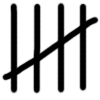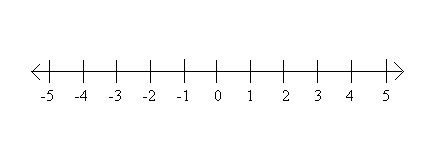By the time we’re adept at it, addition may seem like old hat. But actually, there are different ways to do addition, and we might choose different approaches, depending on our purposes. Keep reading for explanations of different ways to do addition.
• Addition by Counting
Counting is actually the simplest form of addition, really just another name for adding by ones. Sometimes, when we're finding the sum of actual individual objects and there's going to be a space before we can identify and add each subsequent one, counting out loud can be very useful. The sound of each number's name reminds us of where we are. Suppose, for example, you were extricating a mass of tangled items from some container, and you needed eight of them. It would make a lot of sense to use this method.
But if you were counting a moderate number of imagined things as they came to mind, it might be better to count on your fingers. Say, you're standing in a parking lot, trying to remember everyone who was at the beach with you on Tuesday afternoon. Using your fingers to count can be easier than both saying the people's names and counting the number of names at the same time - you divide the task between your voice and your fingers.
Counting with objects that are set before you, you might point to or tap each one as you count out loud to reinforce that it's been included already. You might do this if you were counting coins or cans of cat food if you were getting thirty for the month. Depending on the type of thing you were adding, you might choose to count by ones, twos, fives, or tens.
• Addition with Tally Marks
Now, imagine a situation in which you have to count items one-by-one into different categories. Say you've got the sign up sheets for a school picnic and each person of the 385 who will be attending has written his or her name on a line and indicated a choice of hamburger, veggie burger, or turkey burger, and you have to figure out how many of each is needed.
In this case, you might create a three-column tally sheet, and use tally marks - four straight vertical lines, and a fifth diagonal line crossing each group. When you were done, you could count the groups of fives in each column and easily compute the totals. Tally marks look like this:
|
|

Supposing that after 13 pages, you had to stop and do something else. No problem: you could just make a note on the sign-up pages, and pick up where you left off: unlike adding a column of numbers, which is very difficult to stop and come back to in the midst of the task.
• Addition with Number Lines
If you are working with both positive and negative numbers that aren't very large, you might find it useful to do addition using a number line. The number line can help you keep track of exactly where you are. A number line looks like this (for more about them, see the article “Number Lines”):

• Addition with Horizontal and Vertical Equations
Textbooks often present addition problems in the form of horizontal equations, like this:
17,298.774 + 239,885.3 =
Just because they are given in this form, doesn't mean that this is the easiest form in which to work with them. Often, switching to a vertical format is helpful, because our use of the decimal notation system (see the article on “Decimals” for more) means that we can line up the places of the numbers to work with them more easily like this:
17,298.774
239,885.3 +
• Addition with a Calculator
Addition with a calculator - either handheld or as a computer program - can make long lists of numbers with different numbers of digits far easier to sum. But just because its technology doesn't mean that the calculator will work best in every situation. For many of the situations I described above, it might be more of a hindrance than a help. And that's why I made the claim at the beginning hat there are fine points to addition.
